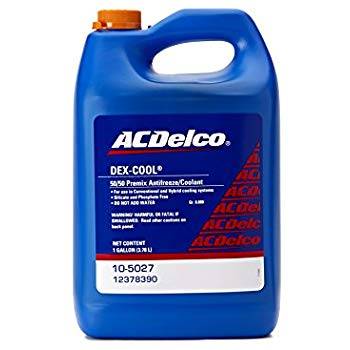

This is the black you are seeing and if you are using older produced anti freeze, you are always instructed not to mix the 2 and when changing from pink to green you have been required to flush very carefully. Mixing products that are 2 years old or more (pink with green) causes a undesired precipitate to occur which happens fairly quickly and can render the cooling system to be totally non functional. Bottom line, one could be left with less ware and tear on the heat exchanger as less silicates will keep from clogging the tiny holes in the heat exchanger that the fluid must pass through or be faced with now a possible corrosion situation. Appearently the suggested YanMar product long life manufacter also has an organic acid component in it which may or may not cause this corrosion-you are left to be the judge as the suit was settled with claims of no wrong doing (and maybe it is some other trace component in the formulation that was causing the problem). There was a class action suit with Long Life Anti-freeze because GM cars spec.ed for its use, seem to be undergoing corrosion on the engine walls carrying this anit freeze long life fluid. Well, if you look for the YanMar suggested producer's anti freeze product(s) manufactured during the late 1998 to approixmately 2007 time frame, you more than likely will not find them on the US market any longer. The reason, the pink product was suppose to be lower in silicate content and was less damaging to heat exchangers. YanMar has promoted long life anti freeze (pink) for some time and actually stressed using a very specific product (which I do not wish to name to avoid any legal complications). Your observation about Dex-Cool brings to light some very interesting needed review. I am surprised at how fast it is depletes. I'm replacing the heat exchanger's seawater side zinc frequently. A local radiator shop fixed it up almost like new (albeit for more $'s than you paid - but I live in a San Francisco area county where repair shops price for owners of BMW's, Mercedes, Porsches, Lexus's, Jaguars etc which seem to outnumber Fords/Chevy's by a good margin). When I bought my boat, the heat exchanger had some pin-hole leaks. MaineSail, thanks for starting the thread on heat exchangers. Hope if was Dex-Cool, I got rid of it before any deep damage. The engine still works just fine, so seems that the head gasket is OK. Now I've gone 11-12 months and the coolant is still lime-green (yes it's time to drain and replace again). I've replaced with an extended life coolant. Other than the black, the engine was performing wonderfully, and because a blown head gasket is something I wanted to wish away, I first focused on the coolant.Īnyway, it took quite a few flushes over several days of motoring to finally clear out all of the blackness. Another said it could be the type of coolant (GM). Several suggested blow-by of exhaust past the head gasket into the coolant. After refilling with clean anti-freeze, the coolant turned black again almost immediately.Īt the time, I posted the question on this site and got some good responses. In the container, the black precipated to the bottom after a couple of hours leaving the upper section of the liquid pristine looking lime-green. After returning to the dock after my first day, I noticed that the coolant was jet black. I ask because before the first outing after I bought my boat (1.5 years ago), I drained (but didn't flush) the coolant, then added new anti-freeze (lime-green Prestone). If the anti-freeze is Dex-Cool, are there any indications of problems before damage is noticed - such as the coolant turning black?


 0 kommentar(er)
0 kommentar(er)
